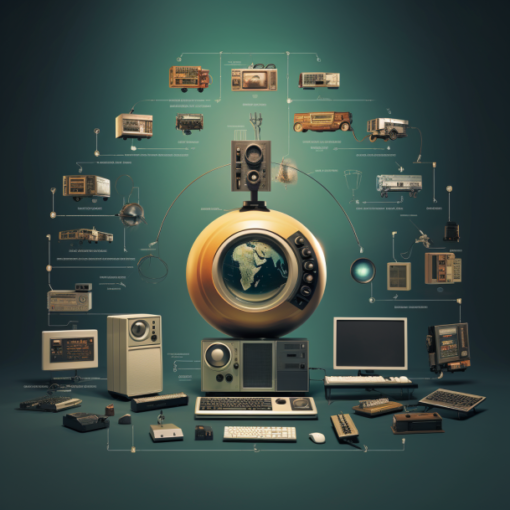As a species, we’ve always been driven by an insatiable curiosity, a desire to push beyond the boundaries of our known world, to explore new dimensions and realities. Today, that frontier is not in the vast expanses of outer space, but in the digital landscapes of augmented reality (AR).
AR is an intriguing blend of the real and the virtual. It overlays digital information – images, sounds, text – onto our physical world, enhancing our perception and interaction with our environment. Think of it as a digital layer that adds a wealth of information and interactivity to the world around us.
The concept might seem like it was ripped from the pages of a science fiction novel, but it is no longer a mere figment of our imagination. It is here, and it’s transforming the way we live, work, and play.
The journey of AR began in the early 1960s, with the creation of the first head-mounted display system. It has since evolved dramatically, particularly with the advent of smartphones, which have made AR accessible to the masses. Today, AR is not just about games like Pokémon Go. It’s being used in diverse fields such as medicine, education, tourism, and retail.
In medicine, for instance, AR can provide doctors with real-time data during surgeries or assist in training medical students. In education, it can make learning more interactive and immersive, transforming abstract concepts into tangible, visual experiences. In retail, it allows customers to try products virtually before making a purchase.
The potential of AR is immense, but it also raises new ethical and societal questions. How will it affect our perception of reality? Will it lead to an over-reliance on digital information, stifling our ability to navigate and understand the world on our own? And, as with any technology, there are concerns about privacy and security.
As we continue to explore this new digital frontier, we must also consider these questions. The narrative of AR is still being written, and it is up to us to ensure it’s a story that enriches our lives, expands our understanding, and respects our values.
In the realm of augmented reality, the line between the physical and the digital blurs, and our world becomes a canvas for endless possibilities. I can’t help but feel a sense of exhilaration as I ponder the potential of this technology. It’s a feeling akin to standing at the edge of an uncharted land, ready to step into a world of wonder and discovery. And I invite you, dear reader, to join me on this journey into the age of augmented reality.

Further Reading:
- The History of Augmented Reality: A detailed account of the evolution of AR technology and its various applications.
- Augmented Reality in Education: Discusses the various ways in which AR is revolutionizing learning and education.
- AR in Healthcare: A Patient’s Perspective: A comprehensive look at the medical applications of AR and its potential benefits for patients.
- Augmented Reality and Privacy: Preparing for the New Data Frontier: An article exploring the privacy implications of augmented reality.





10 thoughts on “The Age of Augmented Reality: A New Dimension of Exploration”
Can you be more specific about the content of your article? After reading it, I still have some doubts. Hope you can help me.
Thanks for sharing. I read many of your blog posts, cool, your blog is very good.
I don’t think the title of your article matches the content lol. Just kidding, mainly because I had some doubts after reading the article.
Thank you for your sharing. I am worried that I lack creative ideas. It is your article that makes me full of hope. Thank you. But, I have a question, can you help me? https://accounts.binance.info/en-IN/register-person?ref=UM6SMJM3
Can you be more specific about the content of your article? After reading it, I still have some doubts. Hope you can help me.
Your article helped me a lot, is there any more related content? Thanks!
Thank you for your sharing. I am worried that I lack creative ideas. It is your article that makes me full of hope. Thank you. But, I have a question, can you help me? https://www.binance.info/en-IN/register-person?ref=UM6SMJM3
Your article helped me a lot, is there any more related content? Thanks!
Can you be more specific about the content of your article? After reading it, I still have some doubts. Hope you can help me.
Your point of view caught my eye and was very interesting. Thanks. I have a question for you.